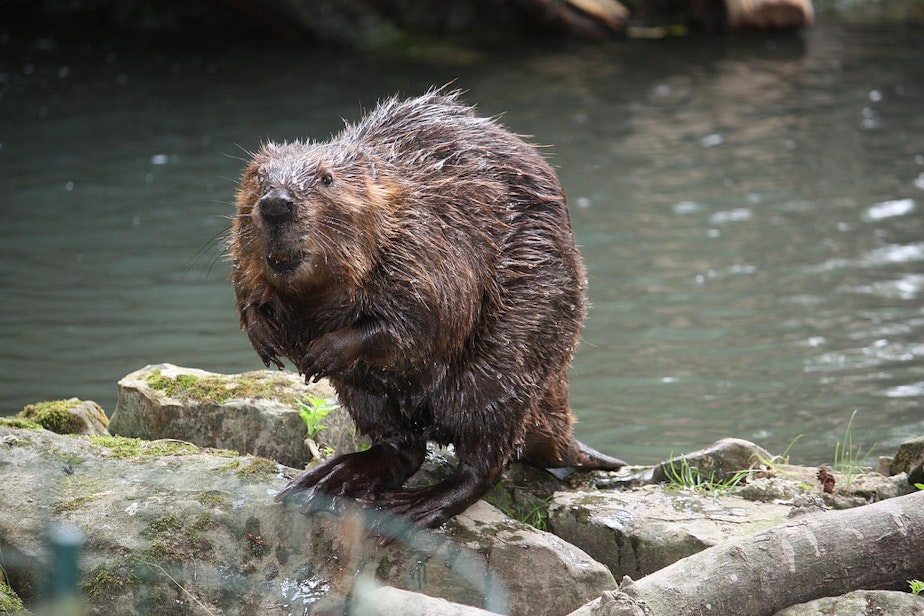This story will make you a beaver believer

Move aside Oregon; Washington state is the real beaver state. And Seattle might be the most “beavery” city in the country.
These rodents are about 60 pounds – the weight of a German shepherd dog — and they have a profound impact on their ecosystems, including cities. A recent study found that 86 percent of Seattle’s streams show some kind of beaver activity.
“We see their chewing along rivers, but we don’t actually see the creatures themselves too frequently," said Ben Goldfarb, talking with Bill Radke on KUOW’s The Record. "They are animals that are simultaneously really present, but really invisible to us.”
Bill Radke interview Ben Goldfarb, Monday, December 17, 2018
“Other than humans, these are the most profound landscape architects we have on this planet,” said Goldfarb, author of “Eager: The Surprising, Secret Life of Beavers and Why They Matter.”
Long ago, North America was more lush and watery than it is now — because of beavers. Goldfarb said the fur industry nearly wiped them out entirely from the U.S., leading to more desert and erosion.
Sponsored
Washington state is more progressive about beavers than other states, Goldfarb said. Here, troublesome beavers are relocated rather than killed.
This attitude could help with environmental goals we have, like increasing salmon to save Puget Sound orcas. Beavers help create great habitats for salmon, like refuges for juvenile fish.
“We’re accustomed to thinking that dams are bad for fish, right?" Goldfarb said. "What’s bad for fish are giant, concrete dams. Fish have all kinds of ingenious ways of getting around beaver dams.
"‘Beavers taught salmon to jump’ is one of the favorite aphorisms of beaver believers."
Sponsored
Beavers actually increased salmon populations, he said, which is good news for ailing orcas.
They may also help with dwindling snowpack by creating reservoirs. Goldfarb called them geniuses at storing water.
“The best part of beavers is how cost effective they are," he said. "You don’t need excavators and backhoes to do beaver-based restoration – you just need to dispatch the rodents out there."
Goldfarb said beavers could be partners in restoring a diminished environment. “We can gain a lot by just getting out of the way in some cases and letting the rodent do the work,” he said.
Produced for the web by Kara McDermott.




